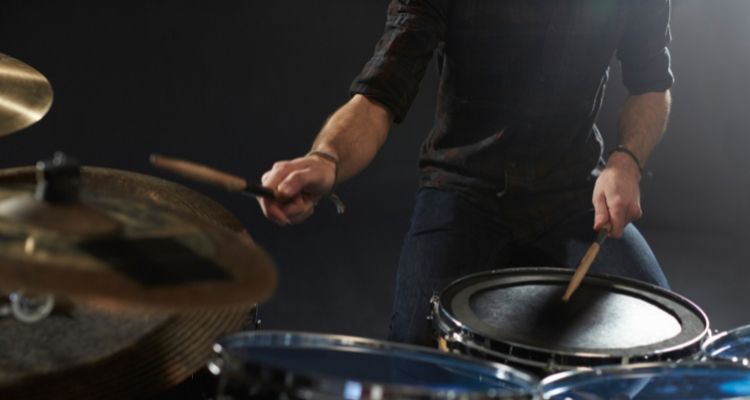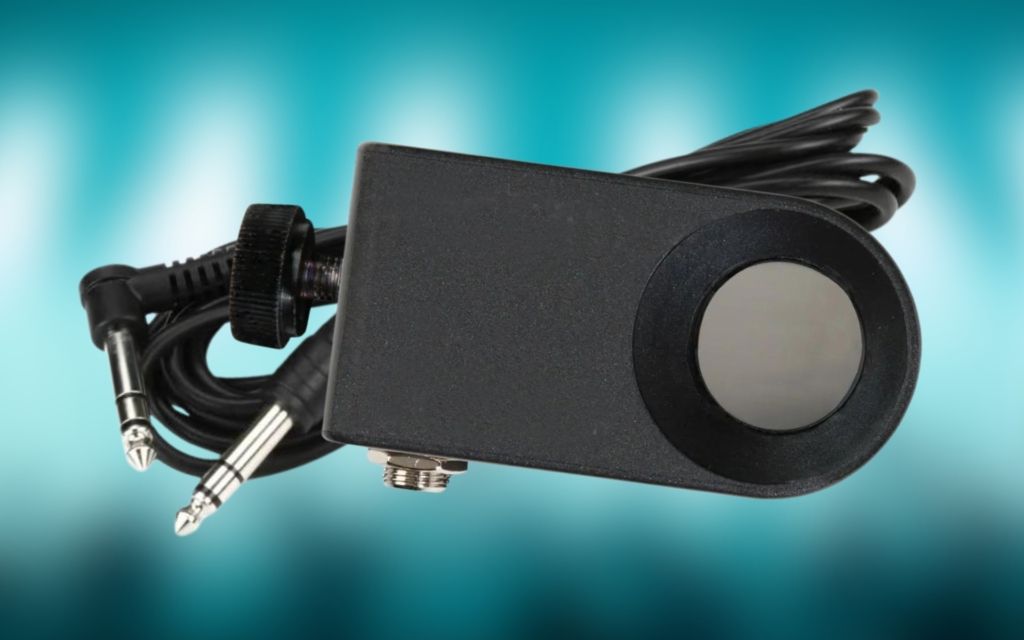The Moeller Technique was undoubtedly one of the best things I ever learned on the drums. It completely transformed the way I played, and it allowed me to improve my speed and control very quickly.
It’s quite a common technique that gets mentioned, but I’ve found it less common that it gets explained in an easy and understandable way.
So, here’s a thorough guide on the Moeller Technique for drums. I’ll explain what it is, where it comes from, how to play it, and I’ll give you a few exercises to practice.
Contents
What is the Moeller Technique?
Back in the early 1900s, a guy named Stanford A. Moeller released an educational drum book called The Art of Snare Drumming.
In the book, he described a certain way of playing the drums that he picked up from observing snare drummers from the Civil War period. The book is full of exercises to boost hand speed and control, and he describes how to play those patterns to make them easier.
That method became known as the Moeller Method or Moeller Technique, and it’s now one of the most popular ways of playing the drums.
How to Perform the Moeller Technique

Whipping Down Motion
I’ve always found the easiest way of understanding the Moeller Technique is to think of your hands as whips.
With your main downstroke, whip your arm down so that you get plenty of force behind the stroke. That’s the first motion of the technique, and it should lead to your stick rebounding once it hits the drum.
When learning techniques like this, I always recommend to students to overemphasize the motion. It will look a bit silly, but it will teach your body exactly what to do. Your arm movements will get much smaller once you’re comfortable with the technique.
Also, remember to practice doing this whipping motion with both hands. You want both your arms to be just as comfortable as each other.
Up Stroke Motion
The second part of the Moeller stroke is lifting your hand upward. As you lift it, you’re going to tap the drum to get a second stroke.
The whole idea here is that the first whipping motion gives you the first stroke, and lifting your wrist up will give you the second rebound stroke. This means that you’re getting two strokes from one arm movement.
If you didn’t use the Moeller, you’d need to use two big arm movements to get two strokes.
You can also get more than one stroke on the upward movement, which is the beauty of the Moeller Method. Try getting two or three extra strokes in with both hands when doing this.
Down and Tap Stroke
You can also use less of a whip with your arm by simply playing a light down stroke. Once you do that, you can tap the drum quickly to get a second stroke.
However, you’ll find yourself using all four motions when playing the Moeller, which are full strokes, up strokes, down strokes, and tap strokes.
Exercises to Work on the Moeller Technique
Singles

The first exercise is a simple single stroke roll rudiment. For the first two strokes, you’re going to do the whipping motion to make them louder.
You’ll follow that with two upstrokes for the other two notes. Make sure that these are softer so that you highlight the motion of going up and down.
Start out with big arm movements, but then make them smaller as you get faster.
Doubles

Now we’re going to move on to a double stroke roll on the snare drum. Your first right-hand stroke will be loud from the whipping motion. Your second one will be soft from the upstroke tapping motion.
You’ll then repeat the same thing with your other hand.
I’ve always found this exercise quite tricky, as most drummers naturally want to use their fingers when playing double strokes to get good rebound from the drum head. However, focus on just using your wrists and the Moeller Technique.
Triplets

Moving onto triplets, you’re going to play three notes with each hand in a repeating pattern. The first note will be the main loud stroke from the whipping motion. The next two notes will come from the upstroke movement.
Here’s where you’ll start feeling how the Moeller Technique allows you to play multiple strokes with only one arm movement.
Keep playing the pattern while alternating between your hands after every three strokes.
Around the Drums

We’re going to move back to single strokes, but we’re going to play them around the drum set. We’re also going to play them in 16th note triplets so that you get a bouncy feel to the pattern.
Accent the first right hand and the last left hand of every group. You’ll also strike a new drum around the kit with the first right-hand accent. Those will be your whipping downstrokes.
All the soft notes on the snare drum will be the upstrokes.
16th Note Groove

The final exercise is to simply play a groove with 16th notes on the hi-hat. You’ll need to use the Moeller Technique to be able to play these quickly.
Benefits of the Moeller Technique

Faster Hands
The main benefit of this drum technique is that you can play faster patterns while using less effort. The motion feels very natural on your hands, so they won’t tense up when you start to get faster.
It’s actually impossible to get really high speeds while moving stiff wrists up and down, so the Moeller Method is one of the options to break through speed boundaries.
It’s Healthy for Your Hands
When your wrists constantly stiffen up, you’re more likely to develop repetitive stress injuries. Utilizing the Moeller means that you’re going to play the drums with much looser wrists and arm muscles, making it far healthier for your body.
Drummers have been using the Moeller for over a hundred years, and it’s a tried and tested technique to give you longevity with your arms and hands.
You’ll likely also get fewer blisters, as you won’t be holding the sticks as tightly.
More Power
The whipping motion of the Moeller gives you plenty of power behind your strokes. You can also get the power without putting a lot of force from your arms.
When you do decide to use force, you can get strokes that are even louder. So, the Moeller Technique does a great job of increasing the amount of dynamic fluidity that you can play with.
I never really associated the Moeller Method with power, but the mechanics make a lot of sense when you think about it.
Increased Control
Finally, you get far more control behind your strokes when you start correctly using Moeller strokes. The technique leads you to use your body in the most optimal way, and that makes your drumming feel more stable when you play very quick patterns.
Once you start using the technique, you’ll quickly realize how playing fast single strokes feels so much better compared to playing them with tight wrists and arms.
Final Thoughts on the Moeller Method
The Moeller Method became something that I couldn’t live without after learning all the strokes. Most drummers I know had the exact same experience. So, it’s a really important technique to learn and master.
If you’re struggling to play faster, it may be exactly what you need to break through your wall. It’s also just one of the best ergonomic techniques for keeping your limbs safe over time!









